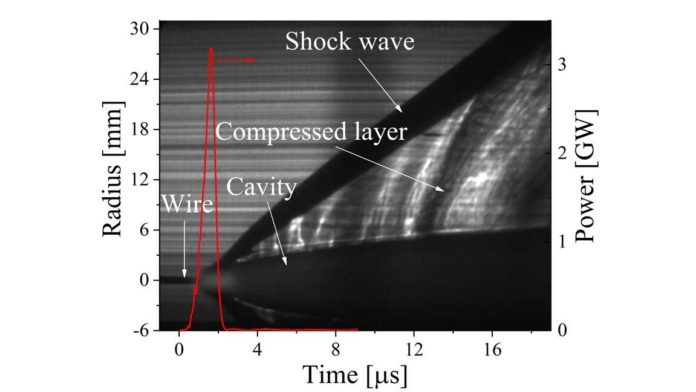The subject of underwater electrical wire explosion (UEWE) has been under intense theoretical and experimental investigation for more than 50 years due to many important technical applications. Basically, it is a way to study shock waves, the propagating disturbances that move faster than the speed of sound.
In a new study, scientists at the Technion Israel Institute of Technology conducted an experiment to better understand the relation between, if any, between the evolution of a shock wave and the expansion of the exploding wire.
For this, they used a microsecond timescale generator delivering ∼180 kA pulses with a 1.2 μs rise time. Shadow streak images were used to study the radial expansion of the exploding wire and the generated shock wave. Scientists found that the wire’s expansion determines how a shock wave decays and developed a simplified model to describe this relationship.
Scientists observed that, when shock waves are generated, the wire continues to expand. This eventually causes slower shock wave than previous models. Furthermore, unlike previous models, this new model does not assume self-similar motion and instantaneous energy release.
Alexander Rososhek, an author of the paper said, “Surprisingly, and this is the exciting part, the results of this simplified model fit excellently the experimentally obtained results. The experiment showed that the exploding wire that generates the shock wave expands with subsonic velocity. This finding, together with one-dimensional hydrodynamic simulations, allowed us to understand in depth the transient process governing shock wave generation, and advances our knowledge of shock wave generation as a whole.”
In other words, the results apply to different experimental setups to study shock waves. For example, the results of this research can be used in experiments where shock intensity is amplified by a water flow acquiring additional energy by combustion of the exploded wires.
Scientists are further planning to increase shock wave intensity by altering the properties of the exploding wire. This is expected to provide a supplementary energy deposition.
